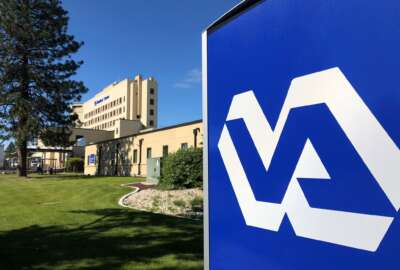The Defense Department has just wrapped up the biggest deployment so far in its multibillion dollar project to replace its electronic health record.
The latest “go-live” for MHS Genesis installations nearly doubled the system’s footprint in a single day. It stands at 42,000 active users, and the massive, multiyear IT project is now about a third of the way finished.
The latest series of deployments — dubbed “Wave Carson Plus” by the Defense Health Agency — brought 25 separate military installations into the MHS Genesis fold all at once.
Those bases were scattered across 12 different states, stretching from California to North Dakota to Missouri. And the latest big rollout went a long way toward helping the department iron out the kinks in the Genesis deployment process, said Holly Joers, the acting program executive officer for defense healthcare management systems.
“This was really a good experience for us to learn how to navigate those geographic challenges, because it was the broadest geographic range we had done to date,” she told reporters Thursday. “Coming out of that deployment, we’re able to look at how we can leverage virtual support as much as practical. We’re also using our ‘pay it forward’ campaign to get folks who actually use the system today to go forward to the new sites, so they can lend help to their peers to understand the nuances of using the system.”
Since the first MHS Genesis deployment in 2017, Defense health officials have maintained they could deploy the system at all 475 military treatment facilities around the world by the end of calendar year 2023. And despite pauses in the program’s early days because of problems leading up to and during the initial wave, Joers said she still has “very high” confidence that the department will meet that target.
But achieving it will mean a significant ramp-up in deployments starting in fiscal 2022. For the first time, DoD will use a “stacked” model that installs Genesis in several of those waves concurrently, rather than conducting them sequentially.
Eight waves are scheduled for next year, when Genesis will make its way to MTFs on and around Joint Base San Antonio-Lackland Air Force Base, Fort Hood, Fort Bragg, Fort Bliss, Fort Gordon, Eglin Air Force Base, and Navy facilities in Jacksonville, Florida.
According to DoD budget documents, that acceleration in deployments will mean the department will need to hire nearly 900 new contractor personnel to install the system and train new users, a significant increase to the 1,500 that are employed on the project this year.
Joers said some of the early preparation work for those waves is already underway.
“We’re going out next week to kick off the Eglin Air Force Base and Jacksonville waves, and we start this process about 18 months out with a kickoff discussion with the commanders,” she said. “Every step of the way is clearly defined. While we may discover things that we can learn along the way, the process itself is standardized. We know what to expect; we know how to convey to the commander what to expect as part of the deployment and adoption. Those are the things that give us confidence that we can handle the stacked waves. It’s a rigorous process, and anything that we discover — like a new medical device that needs to be brought online — we have a process to handle it that is efficient and effective.”
In the meantime, DoD is working on implementation plans for what will be one of the biggest tests of Genesis’s ability to interoperate with the Department of Veterans Affairs.
Via its own more-than-$10 billion contract, VA has purchased the same Cerner Millennium product Genesis is based on, and is still working through its own struggles at its first deployment sites.
But at the James A. Lovell Federal Health Care Center in North Chicago, clinicians from both departments already work side-by-side. That’s perhaps the most interesting use case for what’s meant to be a fully-integrated health record, said Bill Tinston, the director of the Federal Electronic Health Record Modernization program office.
“At the moment, VA and DoD are looking at the end-to-end business processes that are in place to make sure we are delivering configured workflows that support the way that that facility operates. I think this is an opportunity for us to look at other future convergence opportunities on the workflow side that can take the IT out of the decision loop for the administrators of these two healthcare systems so that they can make the decisions they want to make — without letting the IT drive that decision or limiting their decision space,” he said. “It’s a single system, and we’re looking at how to harmonize the workflows to make sure that the workflows work for the combined team in that location. There are other joint sites that were looking at similar thing[s], but without question, [Lovell] is the most integrated facility.”
In the near term, the next major deployment of Genesis will be at all of the military’s health care facilities in Hawaii. Those rollouts are scheduled to be finished by the end of this fiscal year. After that, the next major deployment will be at Joint Base San Antonio, the home of the Army’s largest hospital, Brooke Army Medical Center.
And even though the department feels fairly confident in its deployment process at this point, there’s still plenty more to learn, according to Brig. Gen. George Appenzeller, the Defense Health Agency’s assistant director for combat support.
“I think what we’re learning is less drastic each time. But every time we do something new, we find new things that we can do better, better ways of training, additional things that we need to work on,” he said. “That’s why we have the informatics team so heavily involved with our clinicians – with weekly calls leading up to any rollout with all the commanders to go over all of the things that they can and can’t do. One of the most impressive things is the data management capabilities: we can actually see how much time people are spending in the record during duty hours, after duty hours. What we’ve found is that what some people colloquially call ‘pajama time’ — after duty charting — has gone way down in the locations that have Genesis. That means that not only is the safety getting better, but providers are getting home to their families. And a rested, happy provider is a much more productive provider who takes better care of our patients.”
Copyright
© 2024 Federal News Network. All rights reserved. This website is not intended for users located within the European Economic Area.






